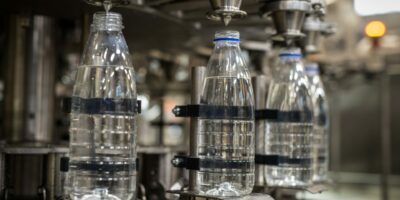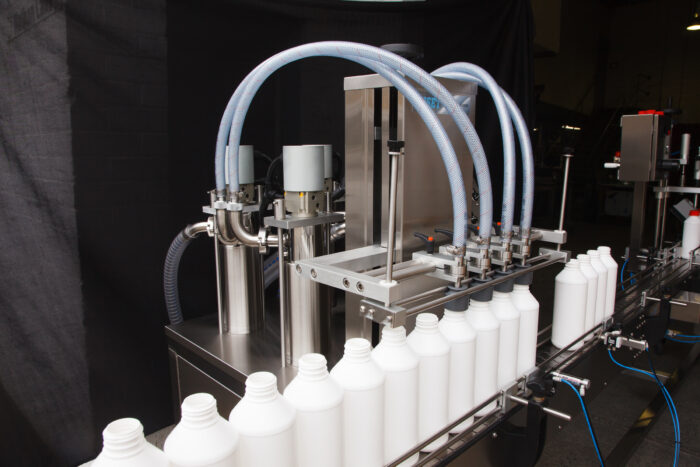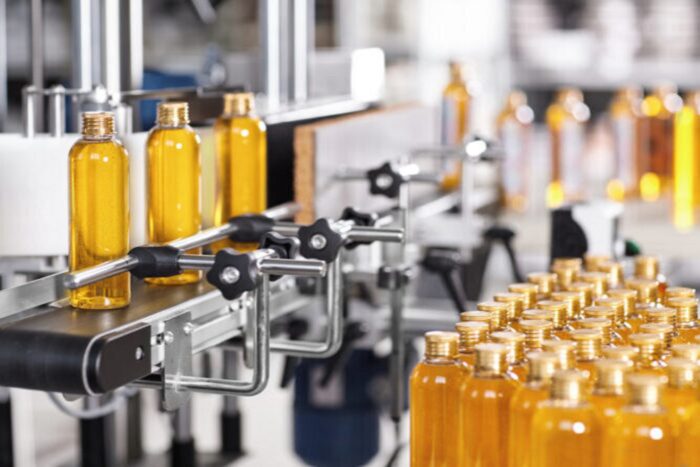Production control is a great way to streamline processes and maximise workflow efficiency while reducing costs. Using a more centralised process, which covers the production line from raw materials through to final dispatch, creates a more responsive, flexible system. Importantly, production control provides quick feedback that allows controllers to anticipate any potential problems before they arise.
Automated liquid packaging machines are a crucial component of a seamless system. Integrating them helps the entire production line work towards the same end goal. As well as speeding up filling, they help a company fine-tune production rates and manage workflow. Before looking at the contribution of automated liquid packaging machines, it is useful to explore exactly what production control includes and why businesses implement it.

What is production control?
In short, production control is a system where businesses monitor and control a particular operation or set of operations. Using a centralised structure, the system helps organise and streamline the work processes within a company, including automated machinery and human resources. Drawing upon data and communications, the system provides a valuable and dynamic overview of the entire production process.
Production control helps to minimise lost time and ensures that resources are allocated where most effective. The process helps companies meet production targets and manage costs, which is particularly important when competition is fierce and profit margins are thin. Production control helps businesses use their labour force efficiently and, crucially, supports quality control. Staff and systems provide feedback that supports quick changes to minimise the financial and reputational losses from a bad batch of products.
From beginning to end
A thorough production control system covers production from the very start, ensuring that raw materials are always available and minimising lost waiting time. It also maximises product flow through the production line and does not finish until products are packaged and ready to leave the factory.
As an example, for a drinks manufacturer, production control makes sure there is enough liquid product, containers, and caps to feed into the production line and ensure it never runs out. A good production control system will also cover personnel, putting enough staff in place to tend machines, perform quality control, and pack goods.

The key to production control is creating synergy and ensuring that one stage supports another. For example, a functional production control process makes sure that machines fill containers with exactly the right amount of product and cap them securely. Doing this requires continuous monitoring of production and centralised decision-making to support rapid changes.
Automation and production control
Although production control usually includes manual processes, it is particularly useful for production lines using automatic machines. Centralised control helps the various machines work in unison, avoiding bottlenecks or surges that can arise if they work at different rates. It becomes very easy to speed up or slow down particular processes if they are causing an issue. For example, if the filling process sends containers more quickly than capping machines can handle, it is easy to turn down the speed slightly.
Although this is possible without production control, communication between the different parts of the process can be difficult, especially on a noisy shop floor. By the time the communication reaches the operator, it may already be too late. Another useful aspect of centralised production control is that it generates data for future analysis. The wealth of data will help a company decide what it is doing well and where it can make improvements in future.
How do automated packaging machines improve production control?
Automated packaging machines contribute to a particularly streamlined process that maximises efficiency and quality while lowering costs. They achieve this in a number of ways:
- Predictability
- Centralised control and supervision
- Automated stop and start controls
- Adapting filling volumes across multiple machines
- Adjust production rate across multiple machines
The first advantage, and one of the most important, is the predictability that automatic packaging machines offer.
Predictability
Because packaging machines work at a known rate, planners can predict production levels and allocate resources accordingly. Automatic machines support synergy between machines and fine-tuning to create an equilibrium where conveyors, accumulation/scrambling tables, and conveyors all work together.
The predictable nature makes it much easier to implement lean management processes and supports ‘Just in Time’ philosophy. This is particularly useful if the storage space for raw and finished materials is limited by space or staffing levels.
Centralised control and supervision
Where systems include Programmable Logic Controllers (PLC) and Supervisory Data Collection and Analysis (SCADA), centralised monitoring and control views production as a whole process. Data and communications highlight issues and facilitate communication between different areas without misunderstanding or lost time. Importantly, it allows controllers to receive feedback for problems, such as quality control issues, and deal with them quickly, minimising losses.
Automated stop and start controls
Automatic systems make it much easier to switch machines on and off centrally if there are any problems such as a spillage, jammed conveyor, or lack of surge capacity. This is especially important for safety shutoff procedures, helping to prevent staff injury. If a system includes multiple filling machines and one has a problem, it is sometimes possible to isolate and shut it down while allowing the others to continue, minimising lost production time.
Adapt filling volumes across multiple machines
Some production lines cover multiple products and fill containers of different sizes. Production control makes it easy to change the filling volume when production switches over to the new type. Another advantage is that, if quality control notices that containers have incorrect volumes, it is easy to alter filling levels without shutting down production for long.

Adjust production rate across multiple machines
Production control makes it easy to adjust the production rate across all machines when demand changes, rather than sending operatives across the factory floor to change each one individually. In addition, it supports slowing down production across all machines if, for example, packers need time to catch up. The ability to tweak rates stops employees from becoming overwhelmed, which can lead to them cutting corners and risking injury or product damage.
How Asset Packaging Machines supports automated liquid packaging machines
At Asset Packaging Machines, we produce a range of automatic systems optimised to support production control across the factory floor. At the heart of our systems lie automated liquid packaging machines that fill containers extremely accurately and at a predictable rate.
To support our liquid filling machines, Asset Packaging Machines also supplies conveyors with adjustable speeds, accumulating tables to absorb surges, and scrambling tables to help your employees feed containers into the system efficiently. We even hire out machines if you want to test the technology or cope with seasonal demands.
Some of the many advantages offered by Asset Packaging Machines include:
- Tried and tested technology
- Four decades of experience in manufacturing leading machines
- System integration experience
- Experience across multiple sectors
Since our foundation, in 1980, we have helped countless Australian businesses integrate automatic filling technology into their production lines. We are the product integration experts and know how to create and refine processes across your entire production line. If you want to find out how our automated technology supports production control, call us at (02) 9958 2883.











